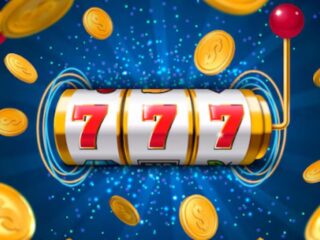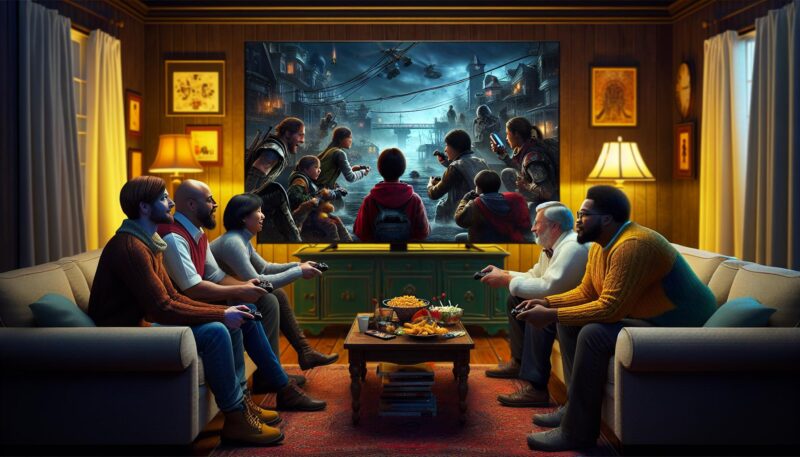
With the MLB season a little over 6 weeks away, it’s time to take a look at what might happen. The answer: nothing is certain in sports but this much is true: new labor deals will be written and more millionaires will walk the streets of your city.
The “carlos correa” is a player who has been the subject of trade rumors. Carlos Correa is considered to be one of the best players in the sport, and he has shown potential for power at such a young age.
29 November 2021
-
ESPN’s Jeff Passan
Close
-
- MLB insider on ESPN
-
- Author of “The Arm: Inside the Billion-Dollar Mystery of Sports’ Most Valuable Commodity,” “The Arm: Inside the Billion-Dollar Mystery of Sports’ Most Valuable Commodity”
-
IRVING, Texas (KTRK) — Sunday’s free-agent frenzy, which saw $407 million promised to players, was the latest hint that Major League Baseball is about to go on strike. With the collective bargaining agreement scheduled to expire at 11:59 p.m. on Wednesday, the rush to lock in agreements is a result of the impending lockout, which is expected to begin at midnight.
The confluence of labor unrest and free agency has undoubtedly produced the most enthralling November in possibly a decade. The Texas Rangers handed Marcus Semien his $175 million bag. Kevin Gausman was awarded $110 million in order to relocate to Toronto. Byron Buxton has agreed to a long-term contract for $100 million with the Minnesota Twins, while Sandy Alcantara has agreed to a $56 million deal with the Miami Marlins. Jon Gray, Avisail Garcia, Corey Kluber, Michael Lorenzen, and Kole Calhoun all headed to Texas, while Jon Gray and Avisail Garcia moved to Miami, Corey Kluber to Tampa Bay, and Michael Lorenzen to the Los Angeles Angels. More bargains are on the way. Soon.
But after it’s over, there’s quiet. For an indefinite period of time, the hot stove will be doused. On the one hand, the fact that clubs and players have behaved as if the collective bargaining iceberg the league is about to strike doesn’t truly exist bodes well for a settlement being reached before games are lost. On the other hand, the fact that we’re here at the Four Seasons Dallas at Las Colinas, where the league and MLB Players Association will spend the next two days haggling, with such little optimism for an agreement, testifies to the lack of progress so far.
There are a slew of unanswered questions after one of the craziest free agency days in recent memory. The solutions to 20 of them may be found below.
What is the current state of affairs?
They’ve been standing in the same spot for months, getting nowhere fast. Both the union and the league are confident in their respective positions. Neither party is prepared to make a big concession. As a result, the only hope for a deal is at the eleventh hour. Greetings, Mary.
While the fundamental agreement expires this week, all sides recognize that a lockout at this time would do irreparable damage to the game. Yes, the visuals are abysmal. Yes, it would jeopardize the labor peace that has prevailed for more than a quarter-century since the last strike ended in 1995. But the real damage occurs when games are missed, which they aren’t in any danger of doing right now.
Is it still possible to reach an agreement?
Absolutely. Nobody in the business thinks that will happen since it would imply all of the months of deadlock would evaporate in just a 60-hour period and the parties would bridge enormous economic and philosophical divides, but stranger things have occurred.
So, what’s on the menu?
There isn’t much yet, which is irritating for everyone concerned. Both parties have stated their respective viewpoints. Players demand greater paydays sooner in their careers, more competition integrity, less service-time manipulation, and fewer artificial limitations on players in the form of the competitive-balance tax (CBT) and draft-pick compensation. A fixed amount of money spent on players, enlarged playoffs, an international draft, and on-field adjustments are among the league’s goals.
2 Related
After the union rejected a proposal for a $100 million pay floor and a reduction in the CBT threshold from $210 million to $180 million, MLB has proposed to boost the CBT somewhat. However, with that rise may come harsher penalties for those who exceed it, which the union fears would nullify any boost. The league has also shown interest in eliminating direct draft-pick compensation. Teams may now send players a one-year qualifying offer — worth $18.4 million this year — and if they refuse it, the club that contracts them is punished by losing a draft selection. In principle, eliminating direct draft-pick compensation would remove the constraints.
In previous negotiation sessions, the league has proposed an NBA-style draft lottery, the installation of a universal designated hitter, and a rise in minimum salary. The lottery might motivate clubs to avoid tanking, addressing a critical competitive-integrity problem raised by players. The suggested increase from the present minimum compensation of $570,500 a year was minor, but a huge number of players are hoping for additional opportunities for outstanding performance to be recognized.
While MLB has discussed a bonus pool for players with less than three years of service time, combining it with a reimagining of the arbitration system — in which a pool of money for arbitration-eligible players would be divided up based on a concept like Wins Above Replacement — did not go over well when it was first proposed.
There are opportunities for players to win. And there are certain victories that owners feel are real prospects, such as enlarging the playoffs. A compromise will be reached when the parties narrow down what is practical in the midst of all the fantasizing that bogs down all negotiation sessions.
The goal is that this week will sharpen those lines so that, even if there is a lockout, the route to a solution will become clearer.
So, it seems that there could be some improvement. What is the most significant roadblock?
Even if there is a lot of anger, it isn’t a lack of respect. The discussions aren’t pleasant, but that’s the point. The hidden reality about all unions and employers is that it is an inherently combative relationship between two parties who also recognize that the greatest success comes from a cooperation that enriches both sides and expands the product.
In the case of MLB and the MLBPA, it’s more about where they began and how wide the gap must be bridged. The players think they’ve lost a lot of ground in recent years (just look at average compensation, which has remained flat even as revenues have risen) and want to reclaim it with decisive victories. The league is content with the current arrangement, and it’s impossible to blame owners given the strength they’ve built up over years.
Is there a lesson to be learned here?
Absolutely. These talks aren’t going to be a 500-foot home run for the players. They can’t let their rage, which is understandable in many respects, get in the way of the bigger picture.
However, here is when the owners’ inherent advantage is shown. The careers of players are limited. The great majority will play in the big leagues for such a short period of time that just one CBA will apply to them. They understandably want to reap all of the benefits as soon as possible. Managing a team requires a lot of patience. Since 1973, the Steinbrenner family has been in charge of the New York Yankees. In 1981, Jerry Reinsdorf purchased the Chicago White Sox. Owners usually keep their clubs for over a decade. They have the ability to play the long game.
Can the players pull it off?
We’ll find out soon enough. They showed grit last year when they pushed back against MLB’s attempts to reduce their compensation during the epidemic. Commissioner Rob Manfred eventually imposed a 60-game schedule, and players were paid less than they would have been if they had played 80 games at reduced salary. But full pay won out, and the expectation is that the experience will prepare them for the hardships of a work stoppage.
Unanimity — or as close to it as a group of 1,200 people can get — is critical for winning a work stoppage. Younger players see their jerseys among the league’s best-selling merchandise and wonder why they’re still subjected to sub-$600,000 salaries for the first three years of their careers, and they’re tired of taking haircuts in some areas of free agency — middle-class veterans are shorn bald by now — and older players see their jerseys among the league’s best-selling merchandise and wonder why they’re still subjected to sub-$600,000 salaries for the first three years of their It’s easy to imagine a future where the union disintegrates, therefore MLBPA executive director Tony Clark’s job is as much about keeping them together as anything else.
Who are the decision-makers?
There are two of them: Manfred and Clark. Negotiators on each side are Deputy Commissioner Dan Halem and Bruce Meyer, the union’s senior director of collective bargaining and legal. All eight members of the union’s executive subcommittee are veterans: Zack Britton, Jason Castro, Gerrit Cole, Francisco Lindor, Andrew Miller, James Paxton, Marcus Semien, and Max Scherzer. Dick Monfort (Colorado), Mark Attanasio (Milwaukee), Ray Davis (Texas), Ron Fowler (San Diego), John Henry (Boston), Jim Pohlad (Minnesota), and Hal Steinbrenner make up the seven-member labor policy committee (Yankees).
What exactly is the plan here?
Monday’s first negotiation session starts at 2:00 p.m. The parties will meet on Monday, Tuesday, and Wednesday. And if there isn’t a contract, then go with God.
Is that when we’ll have a lockout?
When a CBA comes to an end, you have a few alternatives. The league may decide to leave free agency open and continue to negotiate with the players, particularly if there seems to be progress in discussions this week. In that event, MLB may impose a precise lockout deadline, such as two weeks from now, to put pressure on the players to reach an agreement.
Alternatively, they might lock out immediately, deciding that prolonging the inevitable is pointless. When collective bargaining agreements expire over the summer, leagues across all sports have done just that. The union has also prepped its players for an instant lockout, since history has contributed to a sense of inevitability.
What would it entail?
Baseball, as we know it in the winter, would come to an end. There will be no transactions. There will be no big league free agency. There is no communication between the players and the teams. The general manager is not permitted to attend the wedding of a player.
Yikes. But, really, how big of an issue is it if they’ll simply pick up all of those things after the lockout is over?
As baseball’s 2021-22 hot stove season progresses, keep up with the latest trades, grades, and commentary in one spot. » Tracker
For the players, it’s a huge issue. Those recovering from injuries are unable to speak with the training personnel of the squad. Players who depend on the team’s wellness initiatives for treatment or mental health difficulties shall no longer participate. Latin American athletes are concerned that their visa statuses may be in jeopardy. ESPN received a copy of the union’s lockout preparation handbook, which stated: “If a player on a P-1 or O-1 visa does not reach the United States before the lockout begins, his or her visa may be canceled. If players who have applications to extend or renew their visas have not reached the United States prior to the start of the lockout, their petitions will be stopped. Furthermore, during a lockout, visas cannot be renewed or extended.”
It should be fascinating to see how different teams tackle it. Will the lockout be used as a pretext to reduce staff? Is it possible that there will be furloughs? With the prospect of losing games, how can teams sell advertising? Will season-ticket holders attempt to renegotiate their contracts?
What would happen to free agency if there was a lockout?
Take a look at what the threat of one has already accomplished. Players are scavenging for cash anywhere they can. If a lockout lasts months and players begin seeking for work on the eve of spring training, there will be a frenzy of signings, with hundreds of players looking for work on the eve of the season.
Is it legal for anybody to sign during a lockout?
Yes. All players who did not appear on a big league roster last season or who are not presently among the union’s 1,200 members. Small league agreements and trades can be completed, but it’s not like clubs can sign a top free agent to a minor league contract with large incentives that would have been their pay in regular circumstances. Aside from the entire on-the-roster-last-year thing, there’s a $4 million limit for non-roster invitees.
What are the immediate ramifications?
Because they don’t want to be at the mercy of the talks, a flood of lower- and mid-level players will flock to Japan. In most cases, a player may expect to get a non-roster invitation in late January or early February. In a normal year, the same talent would be significantly more likely to seek possibilities in Japan.
What about men with names I recognize?
Carlos Correa, widely regarded as the best player in this free-agent class, will not sign before the CBA ends unless something extraordinary happens. Robbie Ray, the reigning American League Cy Young Award winner, is in the same boat. Trevor Story and Freddie Freeman may also have to wait. Clayton Kershaw has yet to sign a contract.
Over the next 24 hours or so, there will be a rush on free agents. Scherzer is said to be on the move. Shortstop Corey Seager is also a possibility. Some relievers are expected to sign. Other lower-level free agents are looking for long-term commitments.
And there’s a cause for the following 24 hours. Physicals are required for a contract to be considered official. While a club may be able to reach a deal with a player on Tuesday and fly him in on Wednesday to meet the deadline, organizations are wary about rushing medicals.
What has the market said about free agency so far?
Despite the players’ dissatisfaction, it’s been a really decent game thus far. Teams have guaranteed more than $850 million in free agent contracts, and that doesn’t include free agents like Correa, Scherzer, Freeman, Ray, Story, Baez, Kershaw, Kris Bryant, Nick Castellanos, Kyle Schwarber, Raisel Iglesias, Kenley Jansen, Michael Conforto, Carlos Rodon, Marcus Stroman, Chris Taylor, Seiya Suzuki, and many others.
The guaranteed value of the free-agent class of 2021-22 will certainly exceed $2 billion. It’s expected to top the $2.1 billion spent in the 2019-20 winter season. Scherzer is on pace to break Cole’s record of $36 million in AAV in the following day, while Seager might hit $300 million or create a position-player AAV record.
It’s difficult to claim that free agency has been irrevocably injured when so many players benefit from it.
So, what exactly is the issue?
Only a small percentage of the 1,200 players represented by the union will accrue the six years of service time required to qualify for free agency. As a result, it’s perplexing that the union puts such a high value on free agency.
The Braves have been proclaimed champions for 2021, which means it’s time to start planning for next season! Here’s what’s new in the world of the hot stove and beyond. Complete coverage »
• Way-too-early Power Rankings for 2022 »
• Passan: ESPN+’s early free-agent tiers »
• Frequently Asked Questions for each non-playoff club (ESPN+) «
The reality is a lot more convoluted than that. Since the union’s foundation, free agency has been a main focus. A healthy union means a healthy free agency. Even though the majority of players do not have enough service time to qualify, every player hopes to be one of the fortunate few. That is enough to bring the guys together.
Due to two variables, free agency has been problematic in recent years: the slow speed at which it progresses and the dwindling middle class for veterans, especially those in their 30s. It’s possible that the latter is doomed. The former, on the other hand, seems to have discovered a possible answer.
In 2019, MLB suggested a deadline for players to sign multiyear contracts. The union opposed it, fearing that clubs would simply wait until the deadline passed and compel individuals on the verge of signing one-year contracts. Despite the fact that there is no formal deadline, players and teams are approaching December 2 as if it were. And it’s resulted in a busy and exciting November, which didn’t exist in previous years.
The issue, of course, is that participants have no idea what the post-lockout phase will entail. Perhaps there is a shortage of players searching for work, causing the market to shift dramatically. As a result, the union may oppose any measure that divides free agency in any way. Nonetheless, no one can deny what free agency looked like in November 2021: By all accounts, it’s fantastic.
Are you certain that this greatness will last?
No, no, and no. The tender deadline is Nov. 30, when clubs must determine whether or not to offer contracts to players with fewer than six years of experience. It’s similar to spring cleaning in the dead of winter. And any player who is not offered a contract becomes a free agent immediately.
As a result, an already congested market will become much more so. And when the lockout ends and all those unemployed free agents start hunting for work, the mood may be quite different than it is now.
So, how urgent is it to get a labor agreement and avoid the frenzied rush?
Both parties feel the other lacks a sense of urgency. MLB’s proposals, according to the union, are unworthy of consideration. The league believes that its ideas have addressed the union’s concerns. The sky is blue, the grass is green, and MLB and the MLBPA are arguing. It’s all part of life’s cycle.
It’s time to get down to brass tacks, Passan. When should I begin to be concerned?
No, not yet. When you read at midnight Thursday on ESPN.com that MLB has locked out the players, your first reaction may be to worry, fearing that this will be another labor disruption like so many others in the past, that baseball is damaged and beyond repair.
And, by all means, propagate that story if you want to be simplistic and ignorant. The fact is that a lockout does not effect you, the fan, right now. It’s a company that does business.
Remember that nothing bothers companies more than losing money. And, since it is an indisputable fact, it’s best to ask: At what point would teams begin to lose money? Spring training is the solution. There will be fewer spring training games, which means less money. Less money has a direct impact on teams. Teams that earn less money prefer to give less money to their players. And players have no desire to place themselves in a situation where they will lose money.
They wouldn’t lose any money if spring training was postponed since players are only paid for the six months of the regular season, but if income sources decline, the league’s offers are likely to reflect that. Nobody wants it, since it may turn into a cudgel that becomes more harmful over time.
So, if you’re looking for a date to be concerned about, it’s February 1st. It’s a concern if there hasn’t been any advancement by that moment. And if there isn’t an agreement by March 1, it’s only natural to start freaking out.
Relax till then. Recognize that the sky isn’t falling. Sure, be disappointed that free agency and trades aren’t taking place, but don’t be the guy who claims he’ll never watch baseball again because these billionaires and millionaires are too greedy, or the woman who claims baseball is being wrecked. That is far from the case in this game.
It’s best to think of this as a chance for the game to build itself up for the future. Stand a fundamental deal that puts the game in a solid position for the future, and don’t get in the way of Shohei Ohtani, the three Juniors, Juan Soto, Mike Trout, Bryce Harper, and everything else that makes the game great.
A reckoning is sometimes required. Baseball is facing its most difficult test in a quarter-century, and although there isn’t much optimism right now, it can — and should — come out better as a result.
Watch This Video-
The “oldest current mlb player” is a question that many fans of the MLB have been asking. In this article, Jeff Passan answers 20 burning questions about the MLB lockout and free agency.
Related Tags
- when does the mlb season start
- mlb season length
- mlb league minimum 2020














